Of course, we had to begin the letter “J” with the most famous “J” of all at the Albert and Shirley Small Special Collections Library!
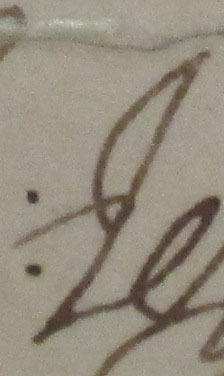
J is for the handwritten first letter of Thomas Jefferson’s last name. This detail of his signature is from his famous “firebell in the night” letter to John Holmes, senator from Maine, 22 April 1820. (MSS 11619. Paul Mellon Bequest. Photograph by Petrina Jackson)
J is for Jamestown
The Virginia Company of London received a charter from James I for land in Virginia in April 1606. Three ships departed London on December 20, 1606 and on May 13, 1607 the settlers selected an island on the James River as the site of James Fort, soon to be Jamestown, the first permanent English settlement in the New World. Two of the most dramatic American firsts to which Jamestown can lay claim both occurred in August 1619: the first representative assembly, and the arrival of the first enslaved Africans.
Contributed by Edward Gaynor, Head of Description and Specialist for Virginiana and University Archives
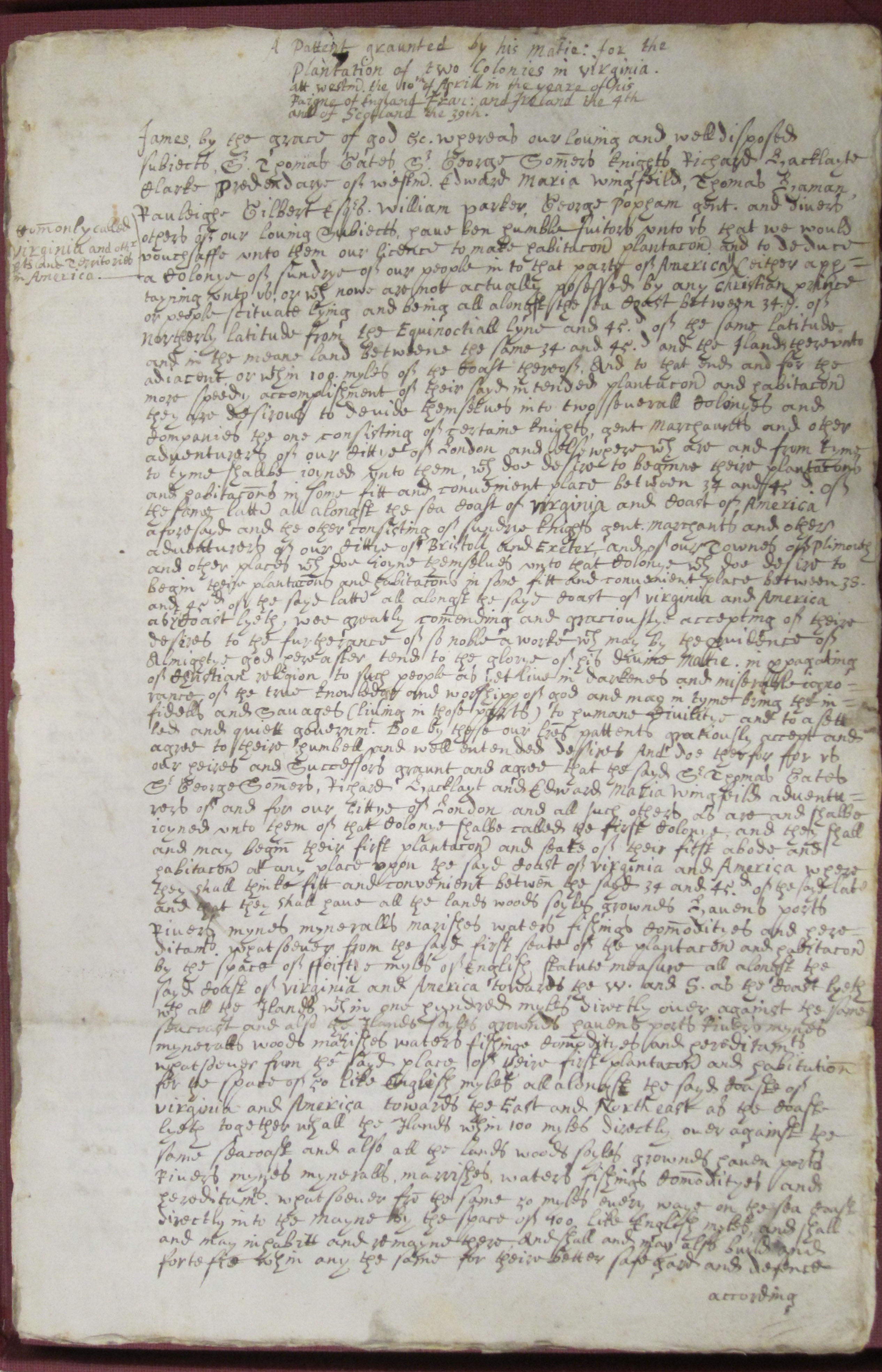
“A Pattent Graunted by His Majesty [James I, King of England] for the Plantation of Two Colonies in Virginia.” 10 April 1606. (MSS 11625. Paul Mellon Bequest. Photograph by Petrina Jackson)
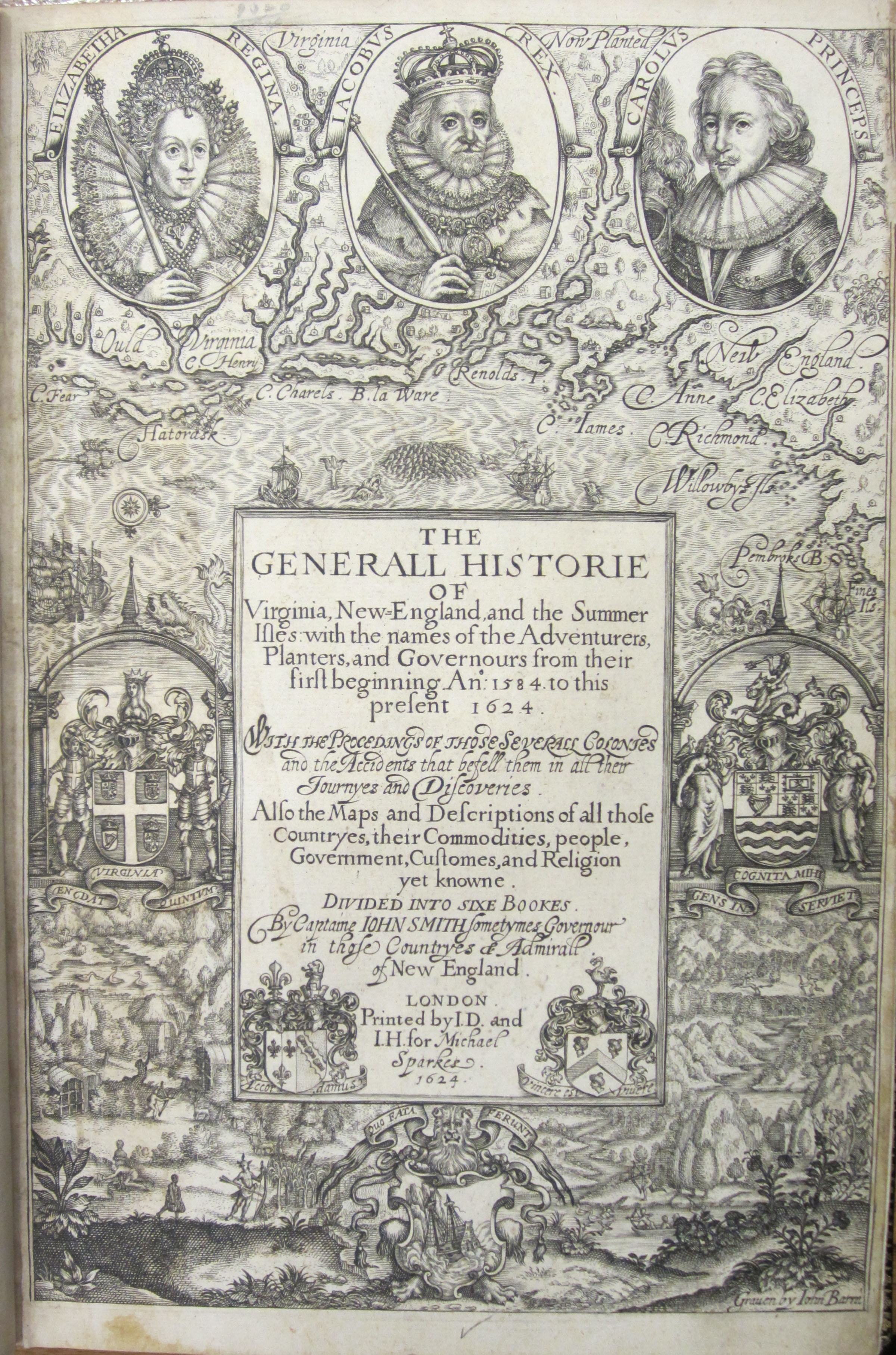
Title page of The Generall Historie of Virginia, New England, and the Summer Isles by John Smith, 1624. (A 1624 .S55. Tracy W. McGregor Library of American History. Photograph by Petrina Jackson)
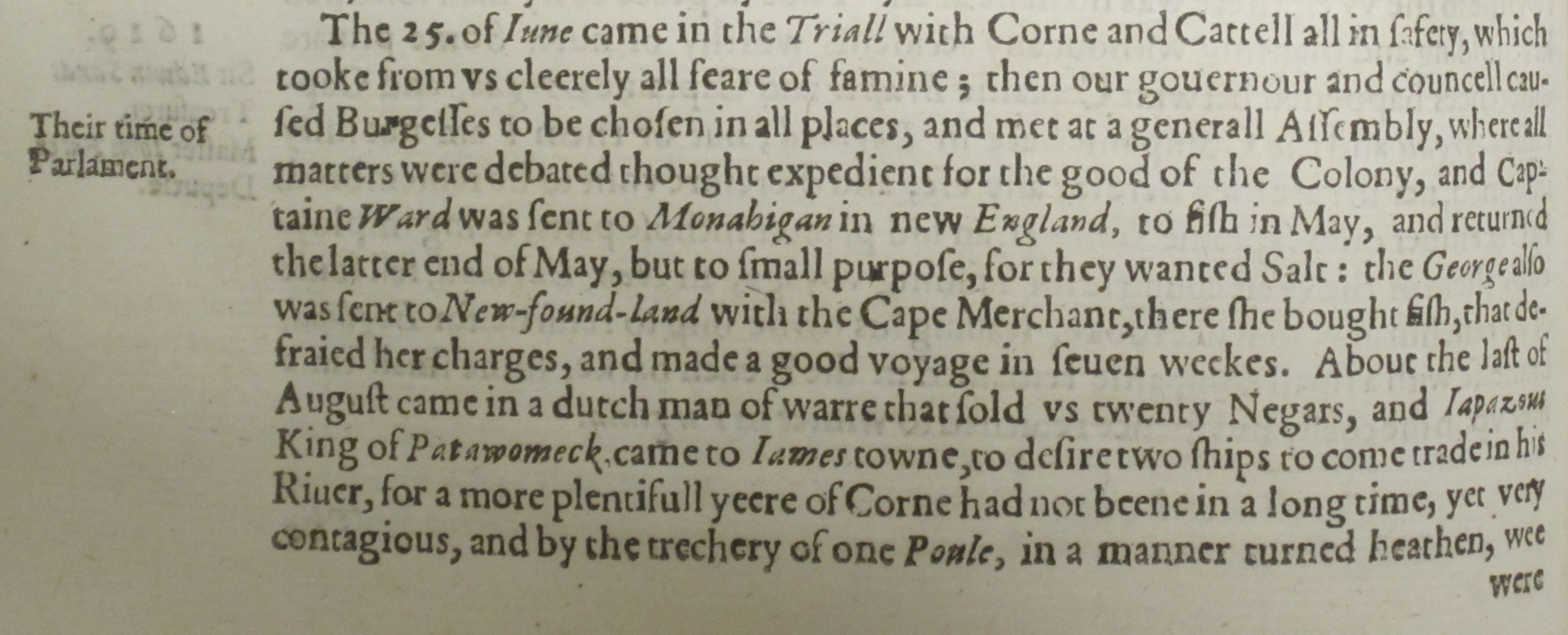
The creation of the Virginia General Assembly and the importation of enslaved Africans are featured here on page 126 in this last paragraph of a Generall Historie of Virginia…, 1624 (A 1624. S55. Tracy W. McGregor Library of American History. Photograph by Petrina Jackson)
J is for Jefferson––Joseph Jefferson
Washington Irving’s beloved character Rip Van Winkle was translated to the stage by the 19th-century actor Joseph Jefferson (1829-1905). The son of an established American theatrical family, Jefferson, who had debuted on the stage at the early age of four, sought to create his own adaptation of Irving’s story but found his 1859 rendition wanting. Five years later, Jefferson contracted with playwright Dion Boucicault to write a version of Rip Van Winkle specifically for Jefferson to perform on the London stage. His performance proved a success both in London and later in New York, and the role of Rip became synonymous with Joseph Jefferson. For nearly forty years, until his retirement in 1904, Jefferson portrayed Rip Van Winkle in his repertoire of theatrical roles.
Contributed by Margaret Hrabe, Reference Coordinator
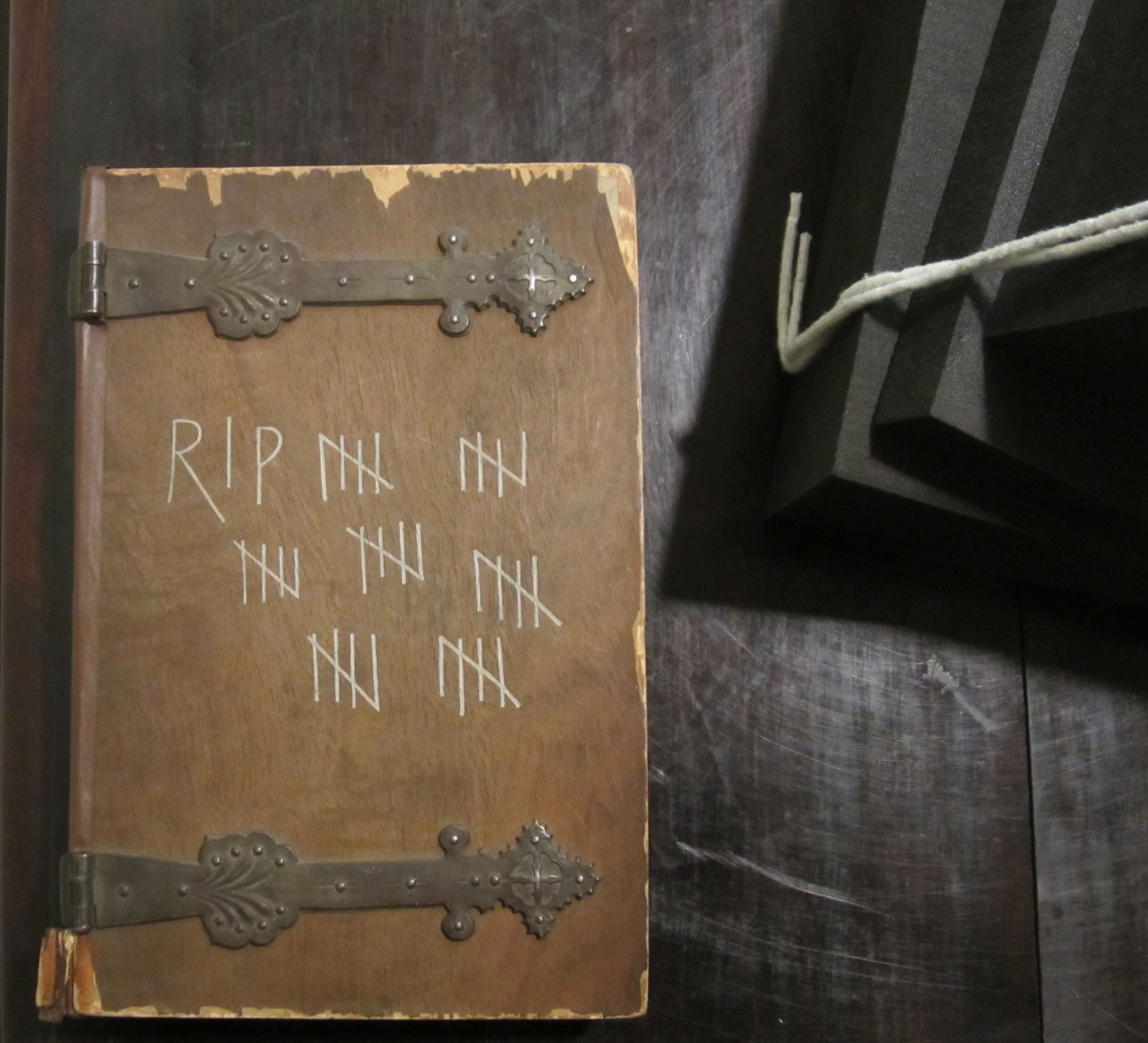
Cover of Rip Van Winkle as Played by Joseph Jefferson. One hundred copies were printed. This copy contains proof impressions of all the illustrations, and portrait signed by Mr. Jefferson.(PS2068 .A33 1895a. Clifton Waller Barrett Library of American Literature. Photograph by Petrina Jackson)
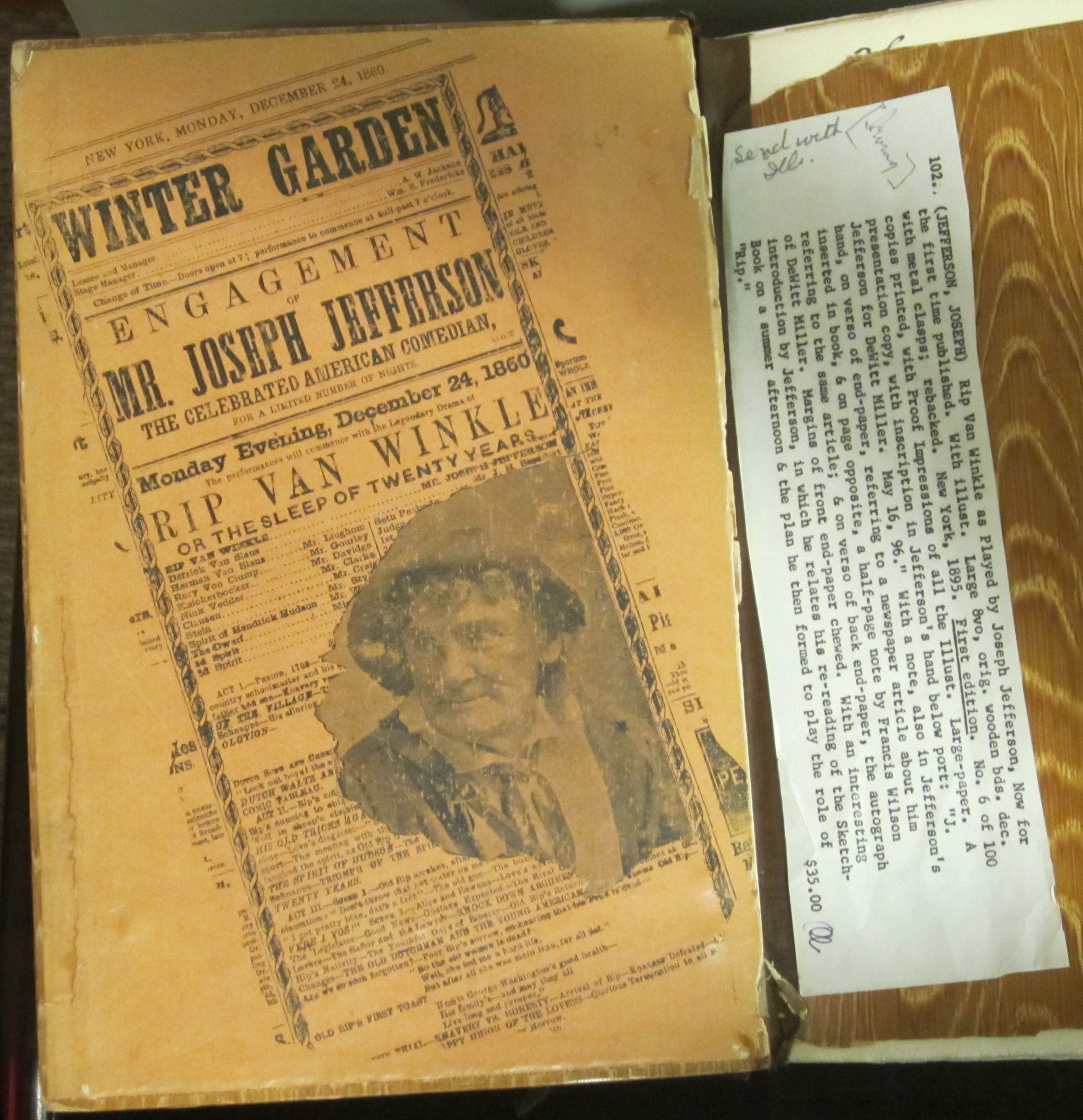
Front cover endpaper of Rip Van Winkle as Played by Joseph Jefferson. (PS2068 .A33 1895a. Clifton Waller Barrett Library of American Literature. Photograph by Petrina Jackson)
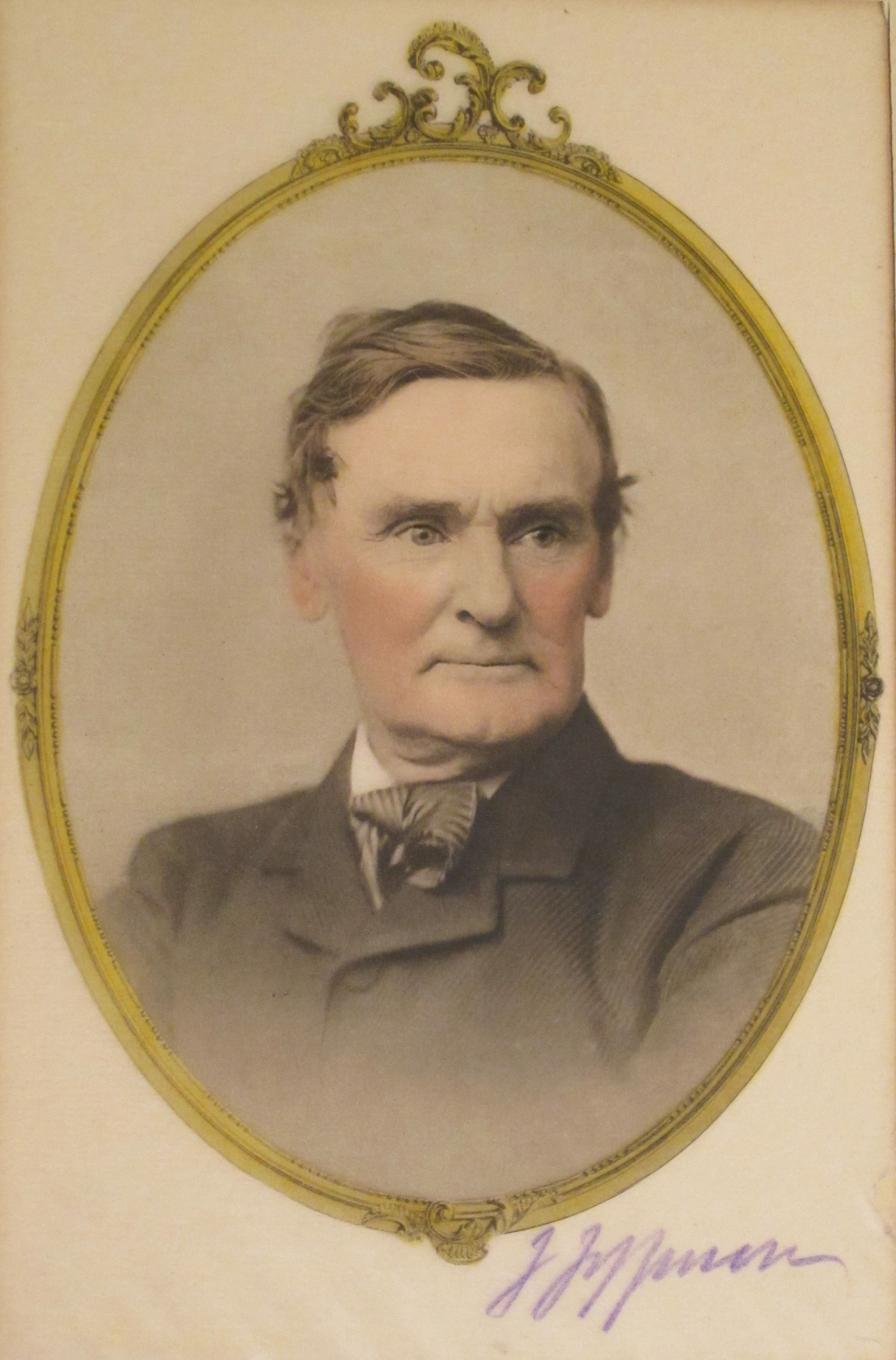
Signed frontispiece of Rip Van Winkle as Played by Joseph Jefferson. (PS2068 .A33 1895a. Clifton Waller Barrett Library of American Literature. Photograph by Petrina Jackson)

Autographed carte de visite of Joseph Jefferson as “old” Rip Van Winkle. (Barrett Print Files. Clifton Waller Barrett Library of American Literature. Photograph by Petrina Jackson)
J is for Curtiss “Jenny”
The JN-4 “Jenny” was one of a series of biplanes built by the Curtiss Aeroplane Company of Hammondsport, N.Y. Although the “Jenny” never saw combat duty, it was used chiefly as a training airplane in World War I and as many as 95% of all U.S. pilots learned to fly in a “Jenny.” At the conclusion of the war hundreds of well-trained pilots familiar with the “Jenny” returned to the U.S. The “Jenny” was the airplane of choice for many and became the workhorse of American post-war civil and commercial aviation.
Contributed by Edward Gaynor, Head of Description and Specialist for Virginiana and University Archives
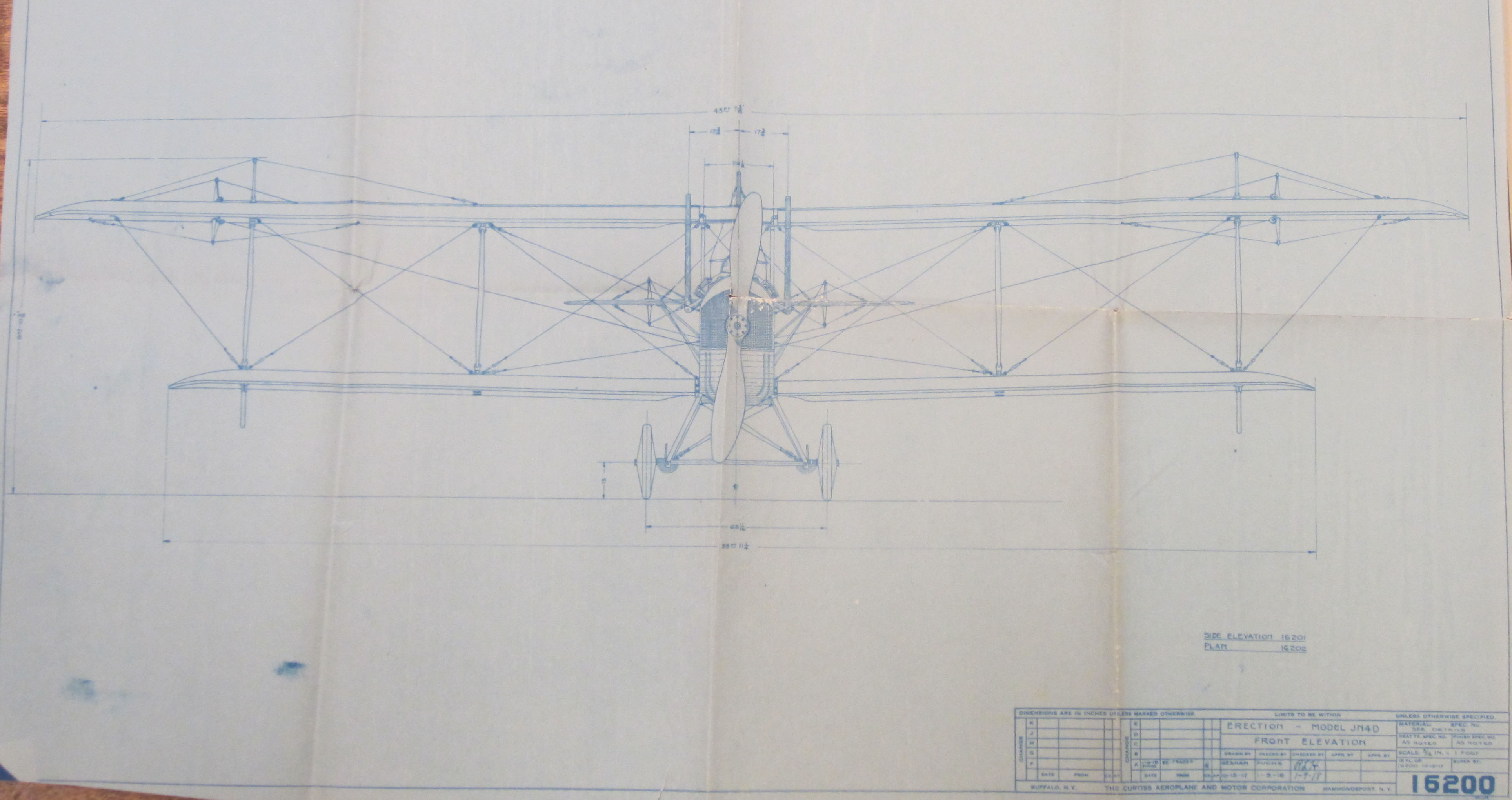
Blueprint of the front elevation for the model J-N-4-D airplane, built by the Curtiss Aeroplane Company of Hammondsport, N.Y., later the Curtiss Aeroplane and Motor Company, 1917-1918. (MSS 10875-bv. Photograph by Petrina Jackson)
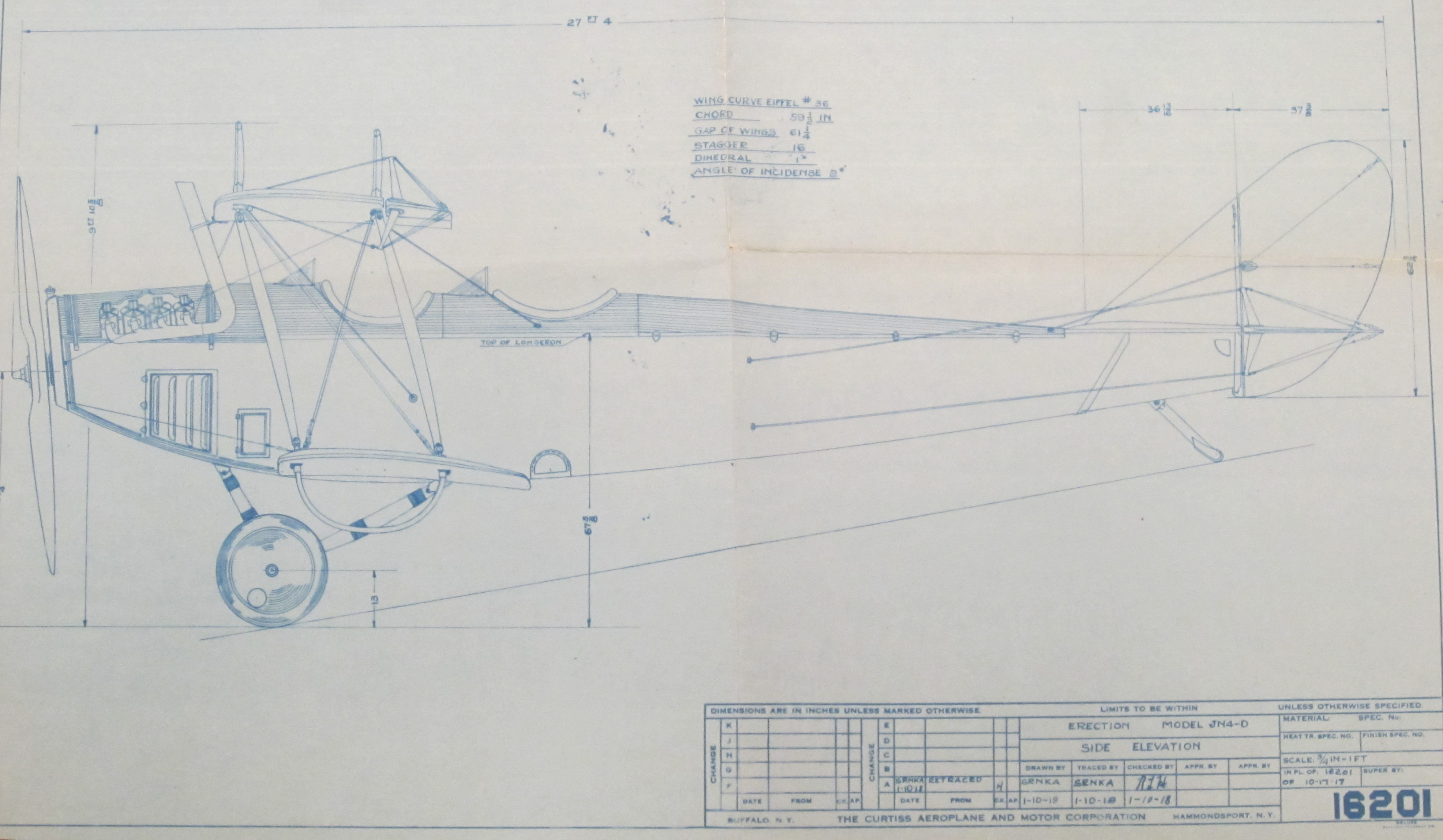
Blueprint of the side elevation for the model J-N-4-D airplane, built by the Curtiss Aeroplane Company of Hammondsport, N.Y., later the Curtiss Aeroplane and Motor Company, 1917-1918. (MSS 10875-bv. Photograph by Petrina Jackson)
J is for Jerusalem by William Blake
The visionary English Romantic poet William Blake (1757-1827) is perhaps as famous for his work as an artist as for his poetry. Considered eccentric, he was not well respected as a creative figure until later in life. While Blake was an established engraver, he also received commissions for watercolors, and painted scenes from the works of Milton, Dante, Shakespeare and the Bible.
Jerusalem, the last of Blake’s great epic poems, was begun about 1804 and not completed before 1818. This first published facsimile of the book is made from the only known illuminated original. Blake printed his etchings in orange ink and illuminated them in watercolors and gold. These facsimiles are hand colored, and required 44 applications on average.
Contributed by Anne Causey, Public Services Assistant
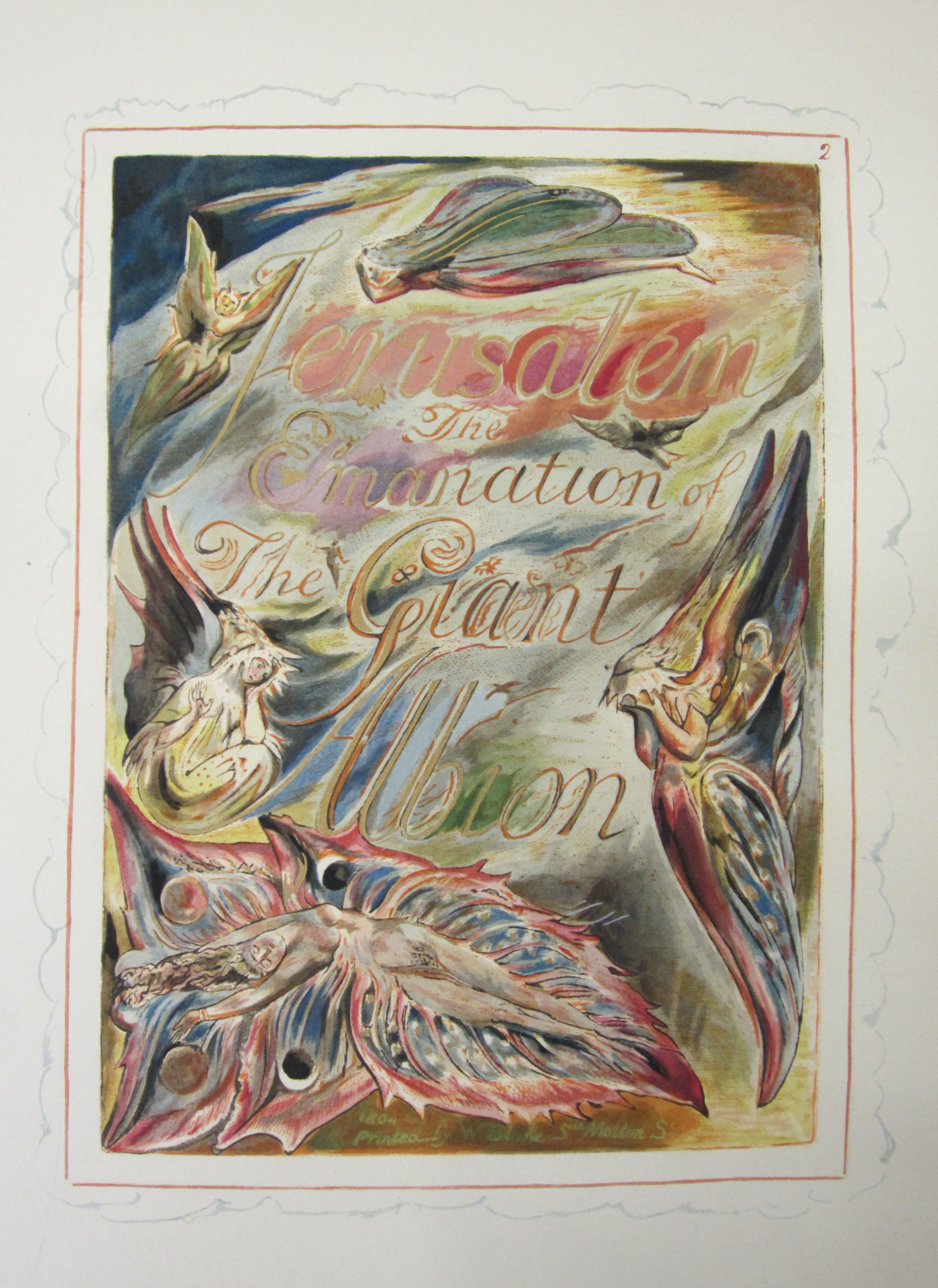
Title page of Jerusalem: A Facsimile of the Illuminated Book by William Blake, 1951. (PR4144 .J4 1951. Gift of Sandra Elizabeth Olivier and Raymond Danowski. Photograph by Petrina Jackson)
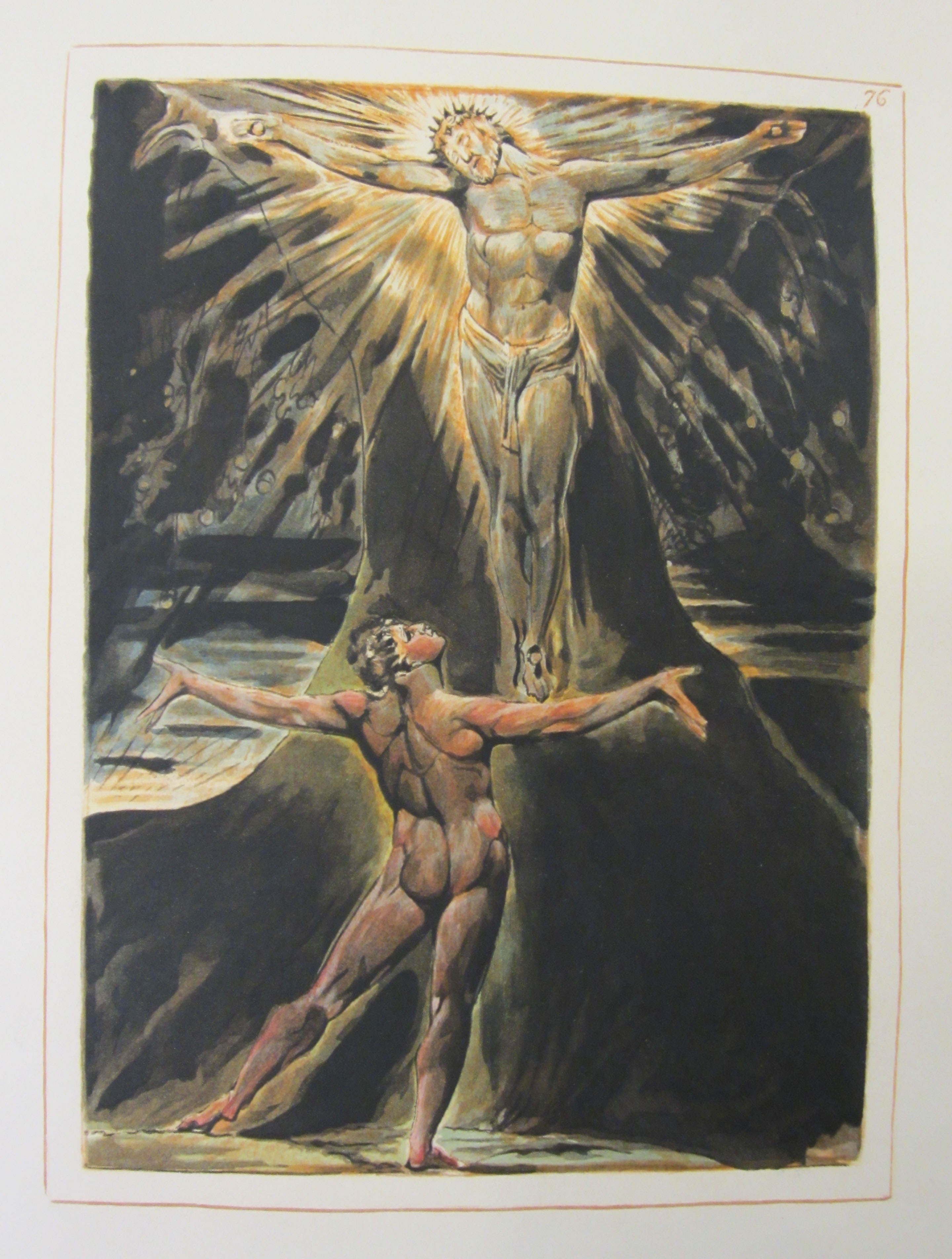
Illustration from Jerusalem by William Blake (PR4144 .J4 1951. Gift of Sandra Elizabeth Olivier and Raymond Danowski. Photograph by Petrina Jackson)
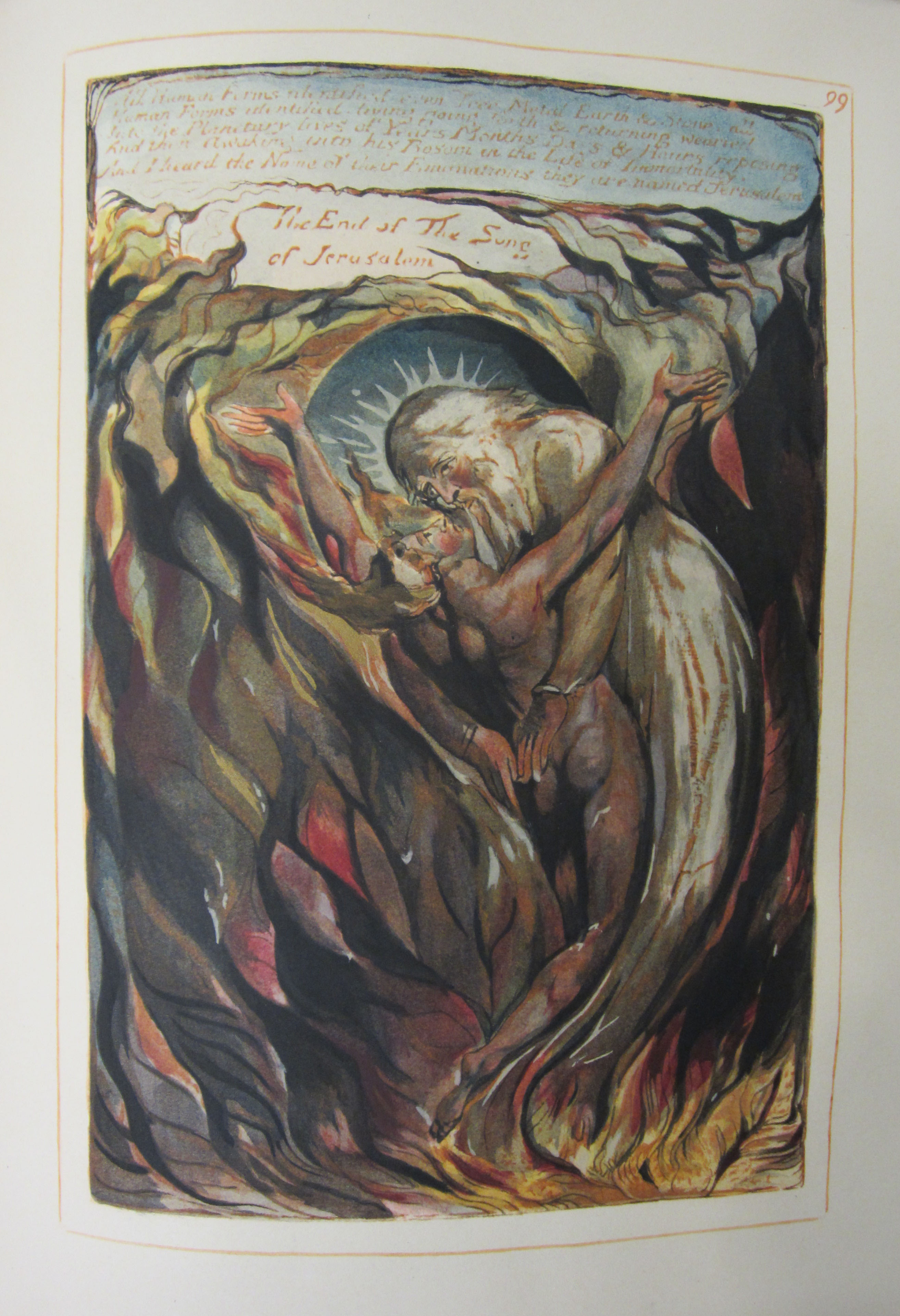
“End of the Song of Jerusalem” illustration (PR4144 .J4 1951. Gift of Sandra Elizabeth Olivier and Raymond Danowski. Photograph by Petrina Jackson)
J is for Junkie
Published under the pseudonym William Lee, Junkie, Confessions of an Unredeemed Drug Addict was William Burroughs’s first published work. Encouraged by Allen Ginsberg to write about his experiences as a heroin addict, Junkie is a semi-autobiographical account of Burroughs’s life on the streets in the early 50’s. Junkie was roundly rejected by mainstream publishers, but eventually found a home with Ace Books, purveyors of cheap paperbacks. Junkie came out in 1953 as an ‘Ace Double,’ published along with Narcotic Agent by Maurice Helbrant.
Contribution by George Riser, Collections and Instruction Assistant
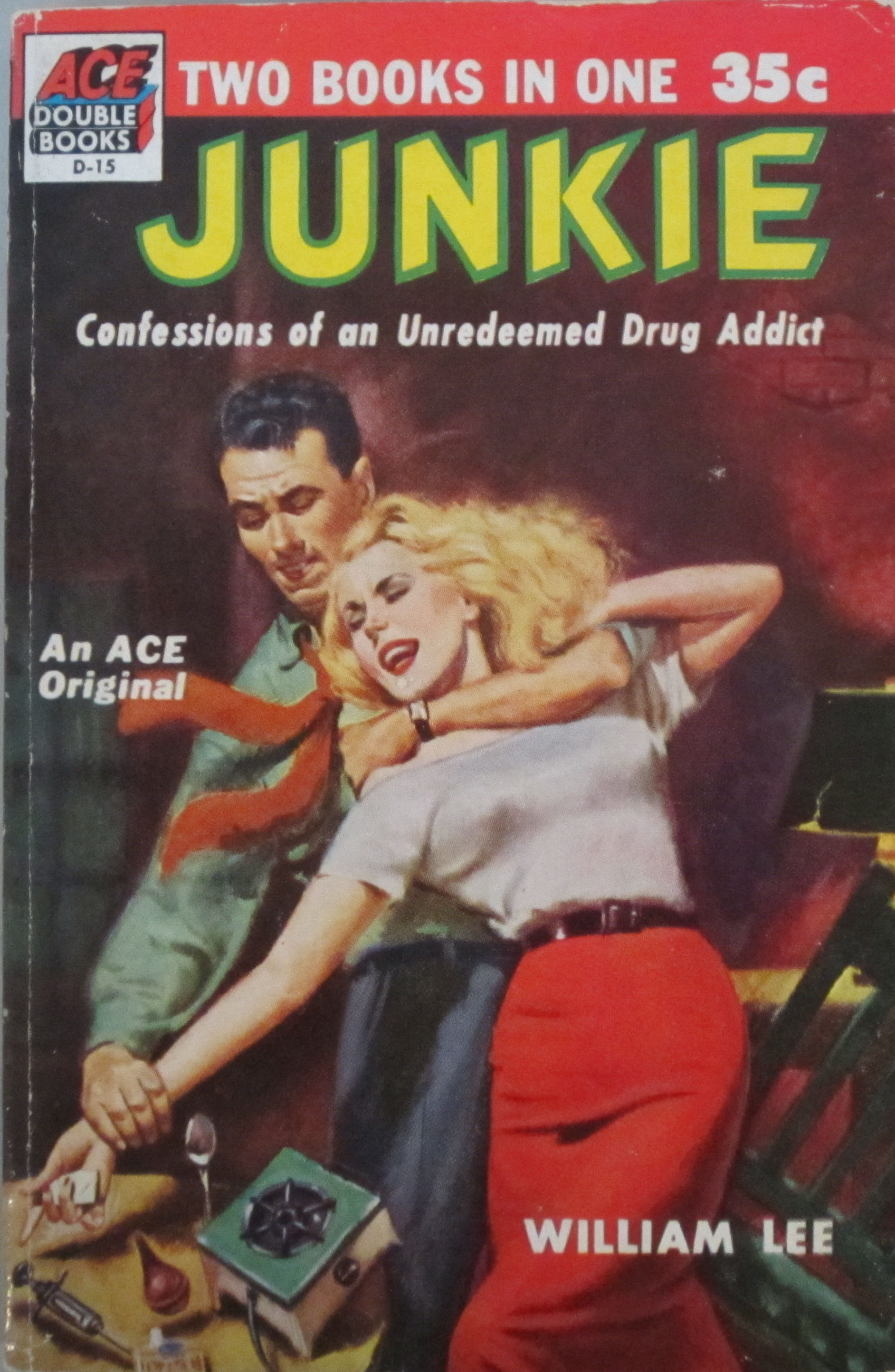
Cover of Junkie, published by ACE Double Books, 1953. (PS3552 .U75 J8 1953. Marvin Tatum Collection of Contemporary Literature. Photograph by Petrina Jackson)
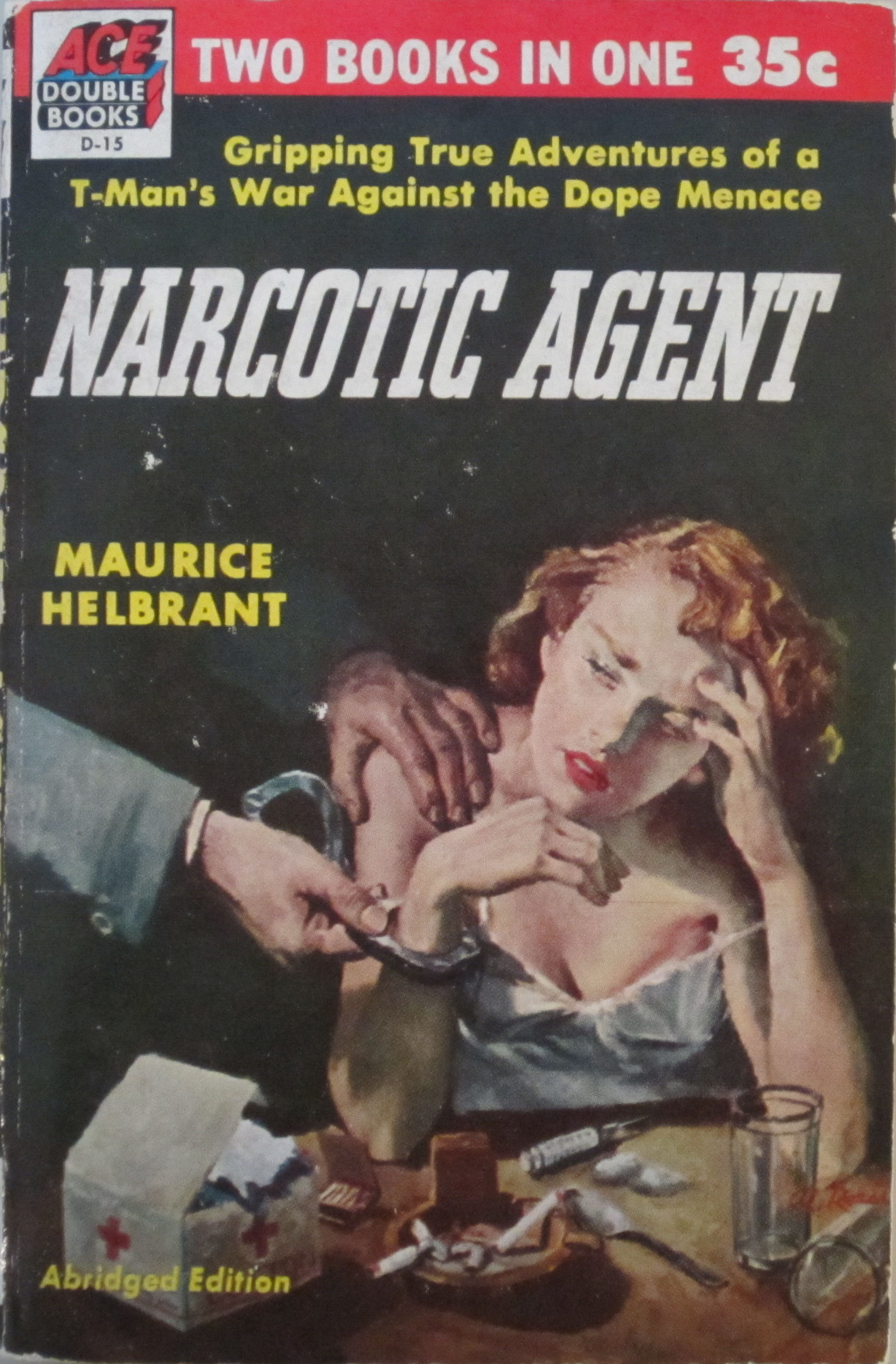
Narcotic Agent by Maurice Helbrant, which is the other book (on the reverse), published by ACE Double Books with Junkie, 1953. (PS3552 .U75 J8 1953. Marvin Tatum Collection of Contemporary Literature. Photograph by Petrina Jackson)
We look forward to seeing you again when we feature the letter “K.” Until then, bye bye!

